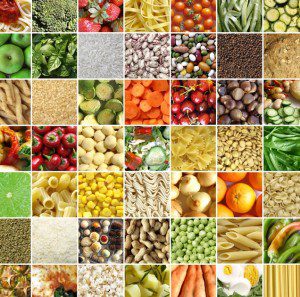By Varya Kapran
Guest Writer for Wake Up World
Today I’ll be touching on a topic that I have wanted to write about for some time: how to determine if your diet is healthy and effective for you in the long term.
This is a really relevant discussion, since we are constantly bombarded with information to support various dietary approaches. It can get confusing at times, and we all need a way of weeding through it all. Of course, I always encourage you to study the science behind each approach, however it is important to temper scientific knowledge with personal experience and assessments. We’re all different. In the end, you need to determine what is right for YOU.
One of the great benefits to what I am about to share with you is that, once you have assessed and settled on a dietary pattern that resonates with you, your body and your long term health goals, you will have the tools to refine and tweak your dietary components according to your needs and, over time, to your changing needs that may occur with physiological changes (ie, increased stress, aging, or an injury).
Let’s define diet
Before we jump into it, let’s define that word. For the purposes of this article, we will be using the word ‘diet’ to mean the kinds of food that an individual habitually eats, as well as their lifestyle to some extent, rather than “dieting” in terms of restrictions, weight loss etc. To this end, a specific dietary approach would signify a preference to certain foods or methods of cooking or eating, based on certain principles.
Optimal health – a long term view
Ideally, we should be working towards optimal health for ourselves and our families. What about considerations like self esteem, weight loss, and feeling sexy naked? Of course they’re important! Optimal health is not just physiological, it is psychological and spiritual as well. So work on what gets you started, keep a nourishing and loving perspective, don’t punish yourself, and be confident in yourself that you will achieve what you set your mind to.
What about short term goals?
Don’t get me wrong – short term goals have great value… but not on their own. They are useful and necessary as stepping stones to the “long term you” – the healthy person you see when you close your eyes. They’re like checkpoints and rewards on the journey! So, this means that short term goals that are detrimental to health (such as starving yourself) are just stumbling blocks. Chuck ’em, and eat something for heaven’s sake.
Is your diet working for you?
So let’s get down to it. You’re about to change your diet, or assess your current diet, and you want to know that you have made the right choices for your body. What to do? Track the results, both quantitatively and qualitatively.
Ideally, prior to starting on a new path, you would do your research, get prepared, and set yourself up for success. With relation to today’s topic, this means taking the time to assess things like temperature, energy levels and libido, before, during, and after (optional if you remain on the diet) you make the change.
Usually tracking for a week prior to creating a big change will give you accurate values and information to move forward with, and then during the first few weeks to a month, you will want your assessments to be regular. Get yourself a notebook, or do it virtually, but just make sure you get a record started. Then, after making any necessary tweaks to your diet based on that info, in future you should only need to reasses if any major life change occurs that could affect your physiological function (this could be a positive change like pregnancy, or something else like increased stress or an acute injury).
It’s important that you track a few quantitative and qualitative measures, to ensure accuracy. I will bold the measures in each category I feel are most relevant. For the quantitative measures, ensure you use body temperature + pulse rate among your records, as weight and body fat are not good representations of metabolic function on their own.
Qualitative measures:
1. Energy level (rate 1-10)
2. Mood (if in a relationship, talk to your partner and get them to help you track)
2. Sleep quality
3. Libido level (rate 1-10)
4. Recurrence of any symptoms that are chronic (ie digestive upset, stool consistency, constipation, UTIs, PMS symptoms, menopausal symptoms, colds, etc)
5. Muscle definition/other visible changes; “how you look and feel”
Quantitative measures:
1. Body weight
2. Body fat percentage (if using a common bioimpedence scale, ensure you are aware of your hydration levels)
3. Body measurements (inches)
4. Skin clarity (take before and after photos)
5. Full blood panel (track this with your healthcare professional)
6. Basal body temperature (Morning + afternoon – at least an hour away from a meal; be consistent with either measuring extremities or oral)
7. Pulse rate (Morning + afternoon – at least an hour away from a meal; be as consistent as you can with times)
8. Nerve and muscle reaction times and relaxation rates (thyroid specific; applicable if you are a movement practitioner or work with one)
Body temp and pulse rate measurements:
A quick note on the importance of body temp and pulse rate measurements… These are generally a good indication of your basal metabolic rate – which we want to be “youthful”. Both measurements give insight on energy production and stress, which will usually depress your metabolic rate. What you are looking for is a higher temperature and pulse, which will indicate your body’s increased ability to consume oxygen and produce carbon dioxide. Keep in mind that some variations may occur with altitude.
As you can imagine, if you are under stress, experience shock, have a low metabolism, or even eat something that causes a stress reaction in your body, your pulse rate and body temp will be affected (a decrease). This makes body temp + pulse rate two of the best and easiest ways of assessing if specific foods are affecting your metabolism positively/negatively.
An exception to this typical decrease in body temp and pulse rate is shortly following ingestion of a food that you are allergic or sensitive to – in this case you could see an increase in both for the next few hours, however it is likely that the measures would show a marked decrease the following morning (barring a prolonged allergic reaction).
So leave your prejudices at the door, and listen to what your body has to tell you about what you’re eating. You’ll be pleasantly surprised!
Note: If you are concerned about your overall adrenaline production due to hypothyroidism or high stress, you can also take pulse rate before and after eating.
So what changes am I looking for?
When tracking all your chosen measurements, you are generally looking for the following changes:
• improvement in your qualitative measures (ie. better sleep, higher energy).
• improved libido! (time to (re)discover your inner sexy!)
• decrease or increase in body weight/body fat percentage/body measurements, depending on your goals.
• improvement or no negative change in your blood work (consult a healthcare professional).
• increase in basal metabolic rate = increase in body temp and pulse rate overall if you are eating well and managing stress effectively.
• decrease in basal metabolic rate = decrease in body temp and pulse rate if you ate foods that caused undue physiological stress the night before or if you are experiencing added environmental stress.
Adjust your diet accordingly, and use these changes to help you determine what works best for you and your body.
Happy eating!
If you need further support, follow up with your healthcare practitioner, explore naturopathic, homeopathic, herbal, and energetic routes, or contact me at Varya.ca
I wish you all healthy eating, and I hope this post was helpful! Let me know if you have any questions or if there is something that you would like me to expand on. I will always do my best.
Love, Varya
Updated September 2014
Previous articles by Varya:
- I Am. You Are. Perfectly Imperfect.
- (re)Discover Your Inner Sexy!
- Loving Your Skin – 10 Essential Natural Topical Treatments
- Healing From Loss
- Home-Made Salted Caramel Recipe (+ Chocolate Option!)
- It’s Time To Come Home
- 15-Minute Flourless Double-Chocolate Cookies Recipe (YUMMM!)
About the author:
 Varya Kapran is a wellness coach whose mission is to help people reconnect with their bodies through nutrition, herbalism, movement, and neural re-education. She works with clients worldwide supporting them in their goals through a combination of cutting edge research, alternative therapies, and other techniques. Her website, varya.ca provides resources, care, coaching, and community for those who wish to improve their quality of life.
Varya Kapran is a wellness coach whose mission is to help people reconnect with their bodies through nutrition, herbalism, movement, and neural re-education. She works with clients worldwide supporting them in their goals through a combination of cutting edge research, alternative therapies, and other techniques. Her website, varya.ca provides resources, care, coaching, and community for those who wish to improve their quality of life.
Connect with Varya on Facebook and Twitter, or visit Varya.ca for more information.

If you've ever found value in our articles, we'd greatly appreciate your support by purchasing Mindful Meditation Techniques for Kids - A Practical Guide for Adults to Empower Kids with the Gift of Inner Peace and Resilience for Life.
In the spirit of mindfulness, we encourage you to choose the paperback version. Delve into its pages away from screen glare and notifications, allowing yourself to fully immerse in the transformative practices within. The physical book enriches the learning process and serves as a tangible commitment to mindfulness, easily shared among family and friends.
Over the past few years, Wake Up World has faced significant online censorship, impacting our financial ability to stay online. Instead of soliciting donations, we're exploring win-win solutions with our readers to remain financially viable. Moving into book publishing, we hope to secure ongoing funds to continue our mission. With over 8,500 articles published in the past 13 years, we are committed to keeping our content free and accessible to everyone, without resorting to a paywall.







